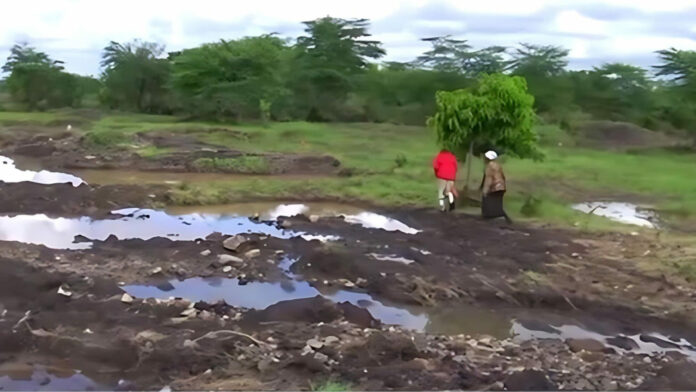Martha Waema, with agony written all over her face, should have been among the farmers reaping big this harvest season. Instead, her 3-acre farm was left submerged by the relentless March-April-May (MAM) rainfalls in Kenya.
She represents thousands of farmers counting their losses. In rural farming areas, water levels from the rains would rise to shoulder height after several days. Urban areas were not spared either, with many residential areas also submerged.
Martha Waema had anticipated earning Sh. 200,000 from her 3-acre farm, having invested Sh. 80,000 in maize, peas, cabbages, tomatoes, and kales. Now, with everything lost to the floods, she is left wondering, ‘What next?’
“I have been farming for 38 years, but I have never encountered losses of this magnitude. This is the most devastating level of loss I’ve ever witnessed,” the 62-year-old farmer stated.
The March-April-May (MAM) rainfalls resulted in nearly 300 deaths and displaced hundreds of thousands. Dams choked with water at historically high levels, and the government initiated programs to evacuate those affected by the floods.
Martha Waema isn’t alone in her struggles; she faces financial insecurity and low optimism for the future. The country is also heading toward a food crisis with higher prices, challenging the president’s goal to make agriculture the engine of the economy.
A few kilometres west of Martha Waema’s farm is 65-year-old James Tobiko Tipis and his 16-acre farm. Unlike Martha, James was spared from the harsh weather earlier in the year. He used terraces to prevent landslides and soil erosion on his farm.
“We advise farmers to do the grass stripped in their farm, cover crops and also terracing. So, cover crops will allow the water to infiltrate into the ground letting no runoff in the far which may cause erosion,” says Jane Kirui, a Narok County agricultural officer.
According to the Kenyan government, floods destroyed crops on over 168,000 acres (about 68,000 hectares) of land. This amounts to 0.24% of Kenya’s agricultural land, based on World Bank data showing that 48% of the country’s land is used for farming.
As the agricultural sector grapples with the devastating impact of the floods, it’s important to recognize the role banks play in supporting the 70,000 farmers affected, as reported by the Ministry of Agriculture, Livestock and Fisheries.
Weather variability and climate change effects can further disadvantage a sector already considered high-risk by commercial banks.
Repercussions include reduced credit flow to the agricultural sector, which currently accounts for less than 5% of total banking debt.
In response to the recent floods and the challenges faced by farmers, Absa Bank has stepped in to provide support.
Recognizing the urgency of the situation, the bank will offer emergency loans and credit facilities through its digital mobile loan application. The move aims to help farmers quickly resume their operations and recover from their losses.
Timiza has become increasingly popular due to its personalized financial services and competitive interest rates on both loans and savings. The app caters to both Absa and non-Absa customers, and it has successfully attracted over 5 million active users.
How to access up to Sh. 150,000 loans without visiting any bank
“We are committed to banking the unbanked and have redesigned our Timiza Product to make it easier for people and small businesses to access savings and loans,” Absa Bank Kenya CEO Abdi Mohammed said.
In addition, Absa’s Timiza offers value-added services like insurance. Users can get coverage with premiums as low as Sh. 42 per month, which provides up to Sh. 100,000 in insurance coverage.
“We will target to win in the Affluent segment, advance our relevance in core middle segment and penetrate the mass and youth segments to secure the next generation of core middle customers,” says Absa Bank Kenya’s Head of Digital Channels, Steve Omamo.
The Timiza App provides loans up to Sh. 150,000 with a repayment period of 30 days. For larger needs, customers can borrow up to Sh. 1 million and repay within 12 months.
Users can make single transactions up to Sh. 250,000, with a daily limit of Sh. 500,000, either via M-Pesa or Absa ATMs.
You can access Timiza either through smartphones by downloading it from the Play Store or Apple Store, or by using the USSD code *848# on your phone. Click the link below to download the Timiza App by Absa.








